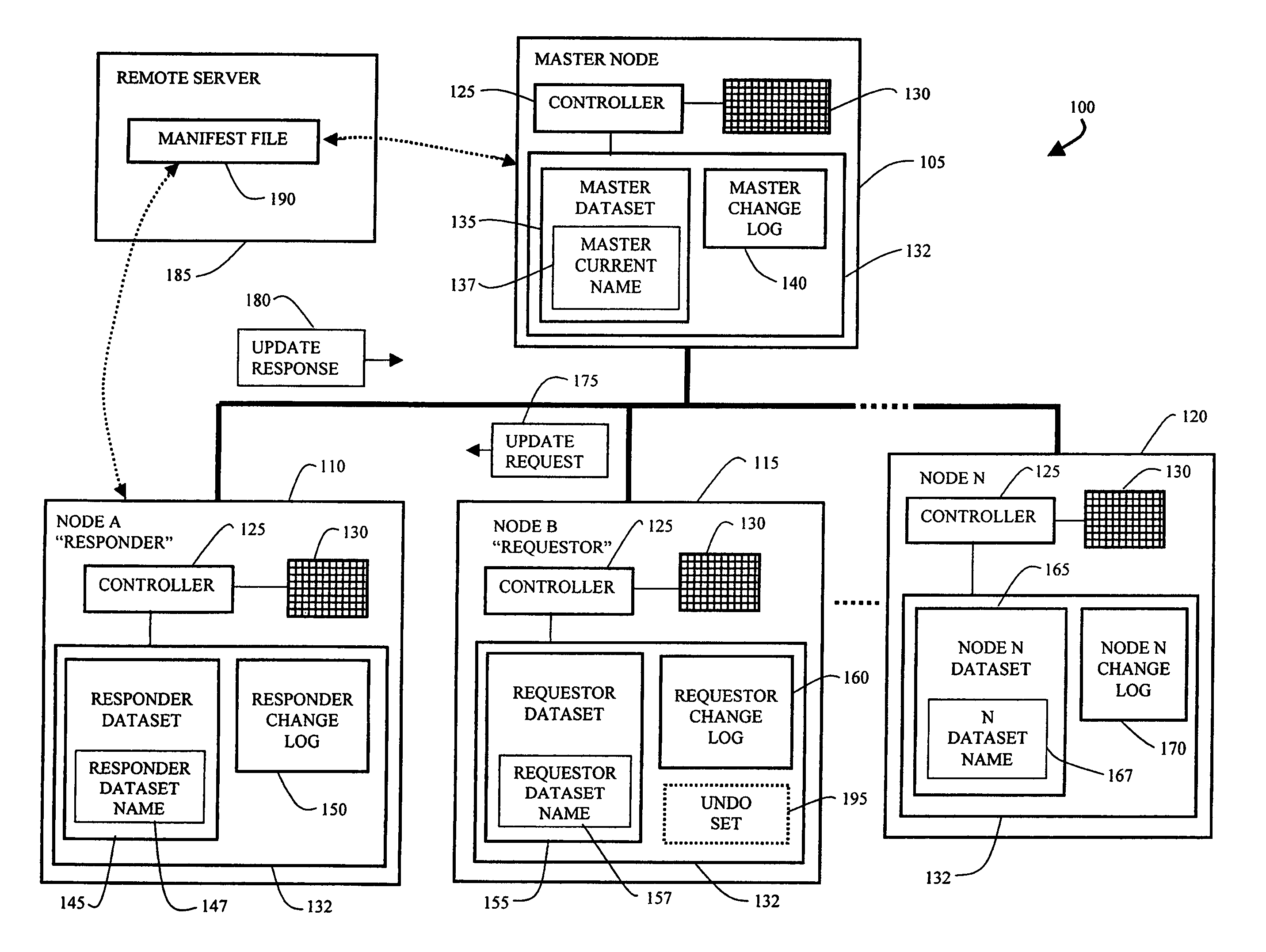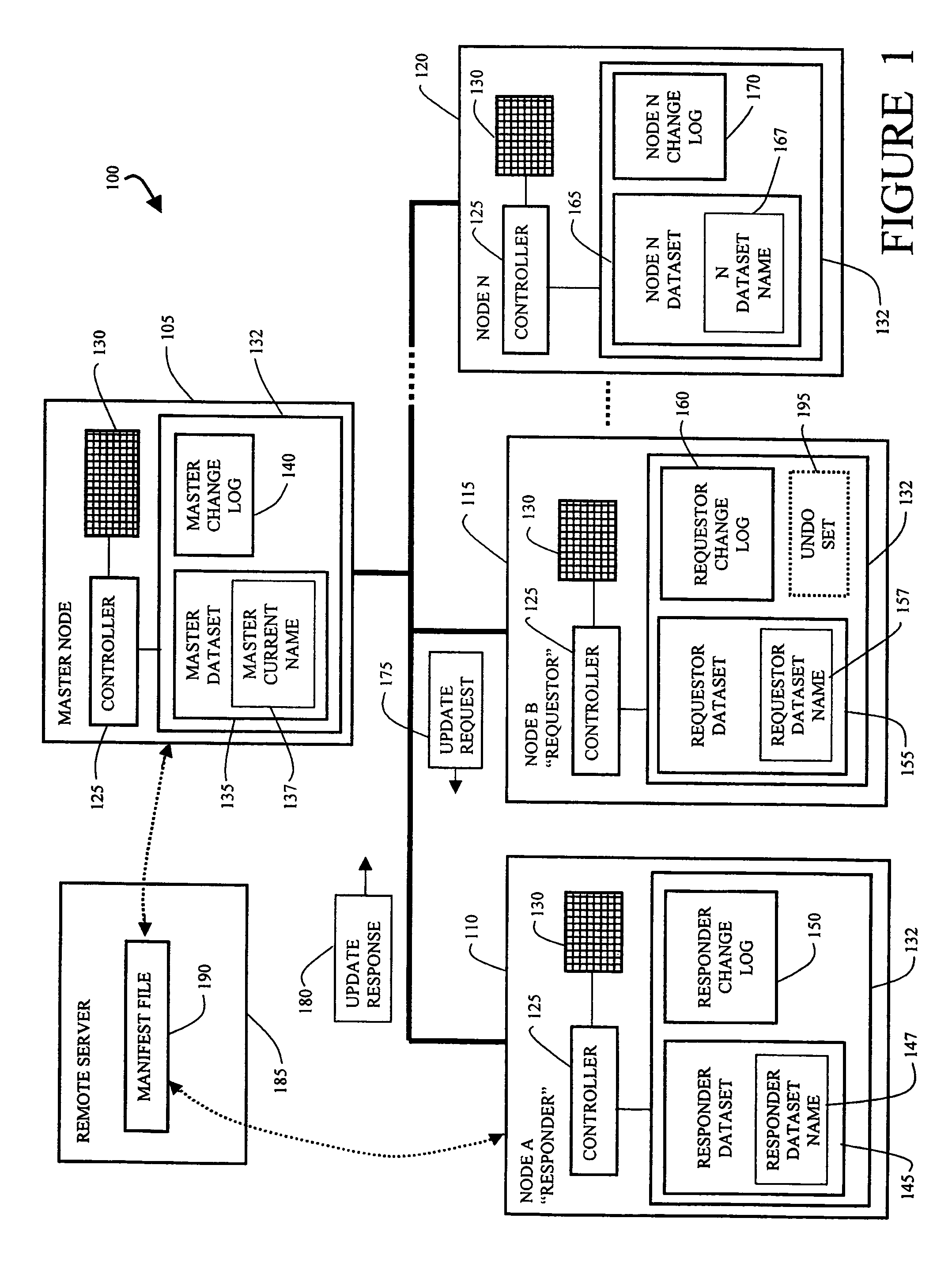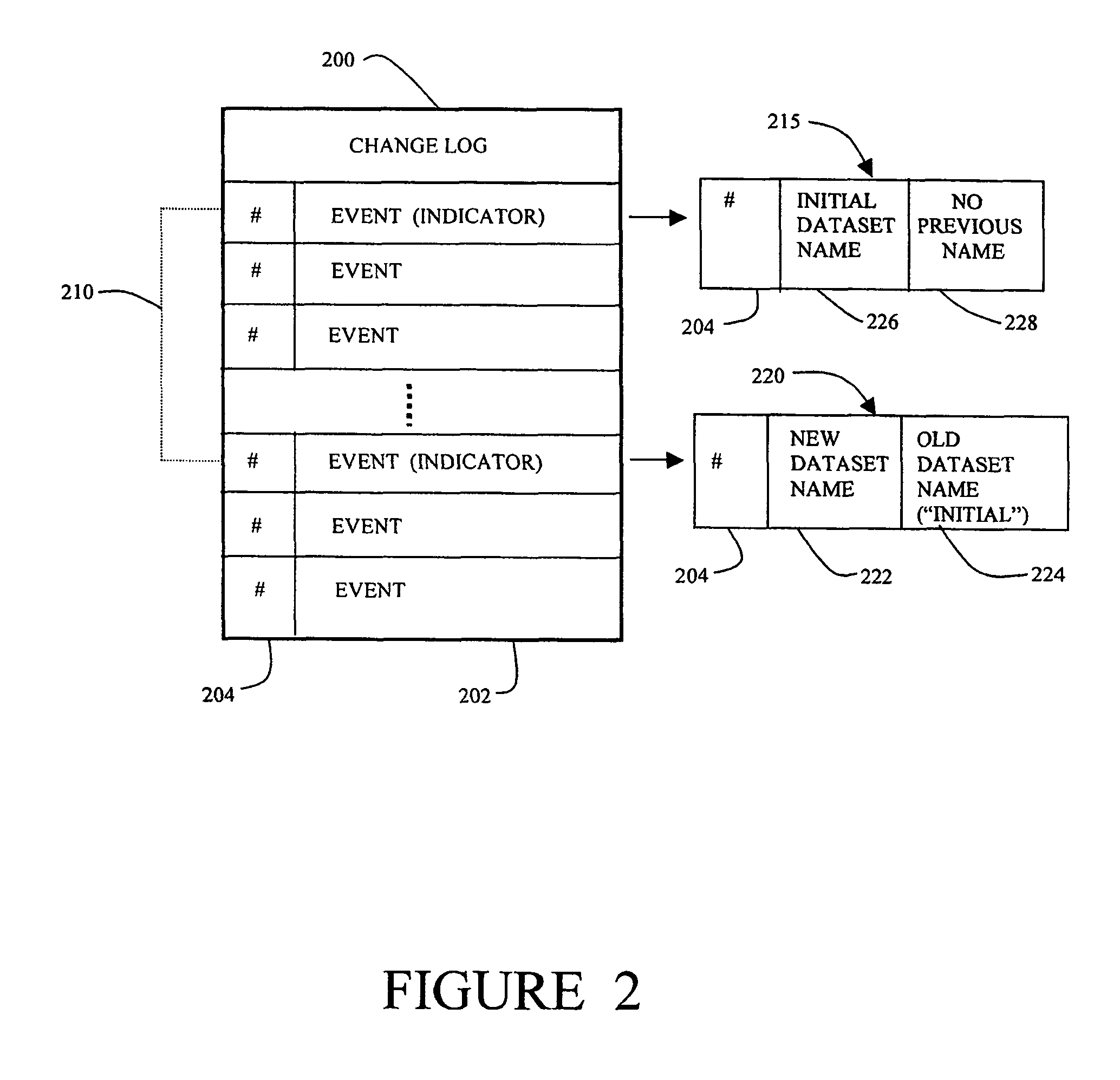Method and apparatus for efficient propagation of large datasets under failure conditions
a technology of failure conditions and large datasets, applied in the field of methods and apparatus for efficient propagation of large datasets under failure conditions, can solve the problems of inability to accurately maintain datasets at subordinate nodes, inability to efficiently propagate change computations among subordinate caching servers, and congestion at the server maintaining manifest files, so as to achieve efficient propagation of change events and efficient maintenance of replicated datasets.
- Summary
- Abstract
- Description
- Claims
- Application Information
AI Technical Summary
Benefits of technology
Problems solved by technology
Method used
Image
Examples
first embodiment
[0035]Subordinate nodes such as node B, the requestor 115, periodically request dataset updates from the master node 105. To do this, the requestor 115 sends an update request 175 to the master node 105. The update request 175 includes a highest event number from the requestor change log 160. The update request 175 also includes, in a first embodiment, a most recent rename record. In an alternative embodiment, the update request 175 includes all rename records in the requestor change log 160. In a further alternative embodiment, the update request 175 includes a channel identifier. The master node 105 receives the update request 175 from the requestor 115 and creates an update response 180 using the information provided by the requestor 115 in the update request 175. The master node 105 transmits the update response 180 to the requestor 115. The update response 180 contains all events that requestor 115 is missing. When the requestor 115 receives the update response 180, the request...
second embodiment
[0058]In the invention, the update request 175 includes all the rename records 220 from the requestor change log 160. In this embodiment the responder 110 words backwards over the rename chains 210 from both the responder change log 150 and the requestor change log 160. This search terminates successfully as soon as the responder 110 finds a rename record 220 in the responder change log 150 in which the old dataset name matches an old dataset name in a rename record 220 in the rename chain sent in the update request 175. At this point, the responder 110 has two rename records, r1 from the requestor 115 and r2 from its own change log 150. Each of these rename records 220 has a matching old dataset name 224. The reconciling entry is the rename record having the lower event number, i.e. the earlier-occurring change in the histories of the datasets 145, 155.
[0059]If the responder 110 does not find a match in either of the embodiments described above, the responder 110 proceeds to step 4...
PUM
 Login to View More
Login to View More Abstract
Description
Claims
Application Information
 Login to View More
Login to View More - R&D
- Intellectual Property
- Life Sciences
- Materials
- Tech Scout
- Unparalleled Data Quality
- Higher Quality Content
- 60% Fewer Hallucinations
Browse by: Latest US Patents, China's latest patents, Technical Efficacy Thesaurus, Application Domain, Technology Topic, Popular Technical Reports.
© 2025 PatSnap. All rights reserved.Legal|Privacy policy|Modern Slavery Act Transparency Statement|Sitemap|About US| Contact US: help@patsnap.com



